Breaking down instrument calibration and verification
Instruments are vital in process environments because their measurements directly impact product quality and operational safety. However, even the most […]
With the rise of raw material and energy costs, efficient asset utilization in food and beverage (F&B) plants and facilities is becoming increasingly critical. Throughout the F&B industry, many processors still operate clean-in-place (CIP) systems with little automation, relying on timing-based processes and manual verification.
These manual procedures require attention to detail and highly experienced operators, leaving no room for error. By installing inline sensors for real-time CIP monitoring and control, F&B processors eliminate variability between cycles and reduce the likelihood of human error. Automating these cleaning systems also reduces cleaning time, downtime, and chemical usage—while providing built-in process traceability.
To ensure optimal performance every cycle, there are various physical and chemical properties that must be understood. Firstly, operators must know exactly what elements are present in process media to determine the detergent concentrations required to neutralize bacteria and pH. Once this is done, effective neutralization requires continuously monitoring the loop and make-up tanks.
With the right flow, level, pressure, temperature, and analytical instruments in place, processors can automate monitoring and chemical dosing control, tasking their control system to determine when to move from one CIP phase to the next. This requires transition instruments to determine when each phase is complete.
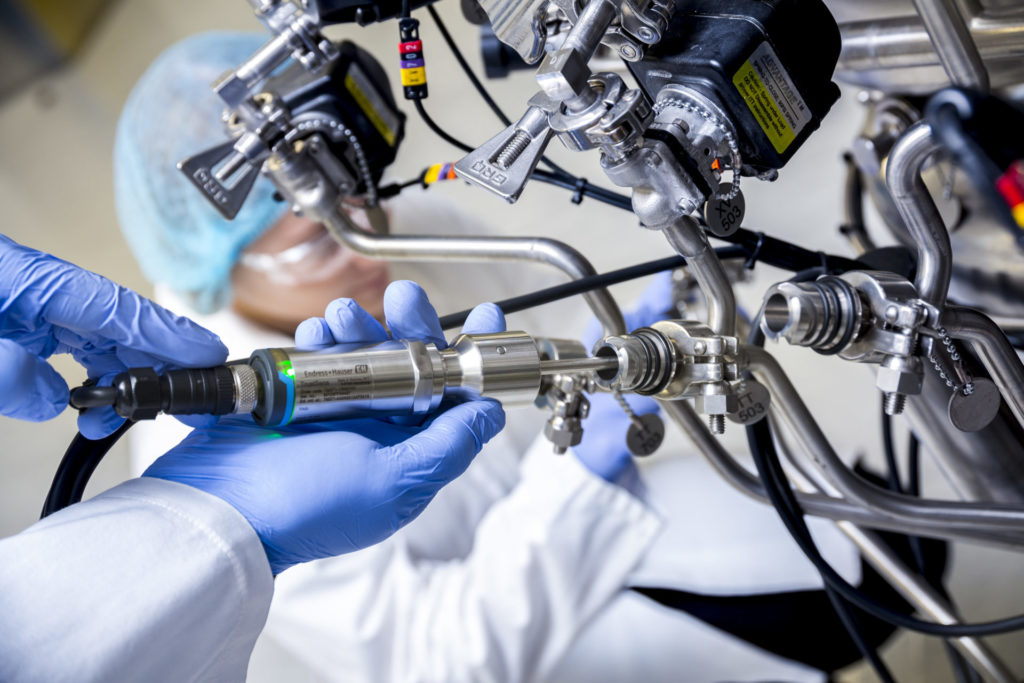
Transition instruments include those used to measure conductivity, optical turbidity, and pH to determine when rinse water or product is in the line, ensuring the cycle only advances when conditions are right. The quicker this can be determined, the less cycle time, energy, and water are required.
For measuring inventory, mix tank, and bath levels, processors can use a multitude of level sensing technologies. Ultrasonic, guided radar, and free-space radar measurement are often used to monitor cleaning agent inventory, while make-up, rinse, and recovery tanks are commonly monitored with hydrostatic or capacitive instruments.
Processors can ensure inventory storage safety with low- and high-level alarms, in addition to empty pipe and pump detection. These indications are typically provided using tuning forks, conductive, or capacitive instruments, with selection based on a combination of tank size, liquid to be detected, and company preference. By implementing these measures, processors reduce the risk of low CIP detergent inventory, and mix tank overflow conditions.
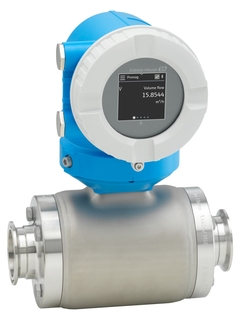
CIP cycles must also incorporate strong and turbulent flow to achieve desired scrubbing effects. Modern flow instrumentation, like the Proline Promag H line, is designed to handle aggressive chemicals at elevated temperatures with high vibrations due to turbulent flow, providing many years of service with low maintenance requirements. These flow meters measure temperature and conductivity as secondary process variables, providing improved process awareness and decision-making.
Temperature within a CIP process can be measured at several locations, closely controlled to balance effective cleaning and minimal energy consumption. It is also a critical control point in many cycles to ensure sanitization, with sensors requiring frequent calibration as a result.
The iTHERM line of smart temperature sensors incorporates online self-calibration, in addition to advanced sensor diagnostics with Endress+Hauser’s Heartbeat Technology. These include sensors like the iTHERM TrustSens TM371 and TM372 self-calibrating sensors. For sensors where this technology is not available, processors can implement iTHERM QuickNeck thermometer extension necks to enable quick sensor release for fast and easy calibration, requiring a simple turning action to open and reinstall (Figure 1).
Cleaning efficiency is based on temperature, detergent concentration, and flow velocity at the installation walls. But there are difficult spots in every system to clean because pipe runs are not always straight and spray ball reach is not always ideal. To determine and improve overall cleaning efficiency, cleaning behavior at these spots must be monitored.
Devices like the compact multiparameter Liquitrend QMW43 instrument simultaneously measure adhesion thickness and media conductivity. Installed at critical points in the plant, they reliably monitor fluid behavior and notify staff when residual buildup is present after cleaning. This enables cleaning frequency and intensity tailored to plant requirements, reducing needless CIP cycles, along with associated energy use and other costs.
Pressure sensors like our Hydrostatic Deltapilot FMB5x and FMB7x units come with a hermetically sealed Contite cell. With the cycling of temperatures in CIP processes they recover much more quickly than a standard cell.
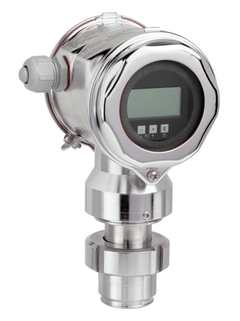
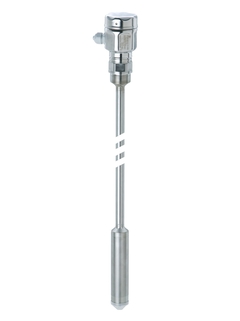
By installing optical absorption instruments, a cheese plant was able to successfully detect phase separation and reduce product loss in its CIP process. Additionally, the plant reduced waste and shortened rinse cycles by implementing conductive technologies, eliminating reliance on guesswork and timing. It experienced the following outcomes:
The OUSAF11 optical phase separation instrument uses visible and near-infrared wavelengths of light to determine composition in CIP lines and vessels, precisely indicating when pre-rinse and CIP cycles finish. This empowers processors to streamline CIP procedures and reduce product loss by monitoring interface levels, suspended solids, and turbidity.
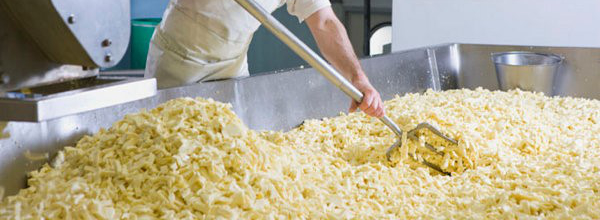
To ease clean-in-place training and operation requirements, Endress+Hauser manufactures a full line of hygienic, sanitary measurement solutions including flow, level, pressure, temperature, and analytical instruments.
This instrumentation meets or exceeds all F&B requirements and regulations, providing:
By installing smart instrumentation in CIP processes, F&B processors increase their automation capabilities and measurement reliability, while reducing energy costs, chemical usage, cycle times, and waste products.
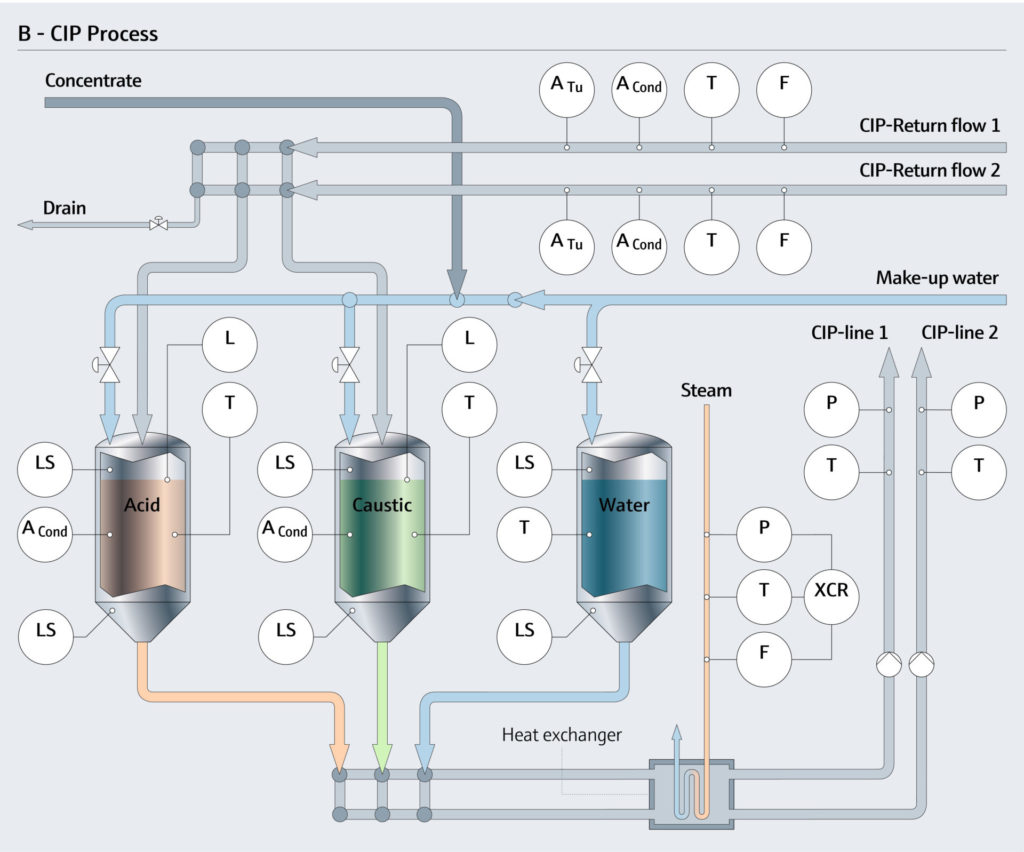
Instruments are vital in process environments because their measurements directly impact product quality and operational safety. However, even the most […]
Navigating today’s uncertain economic and regulatory landscape requires market agility, achievable on a foundation of technological preparedness and strategic vision […]
Technology you can trust in hazardous areas, critical applications and highly regulated industries The process control industries are characterized by […]